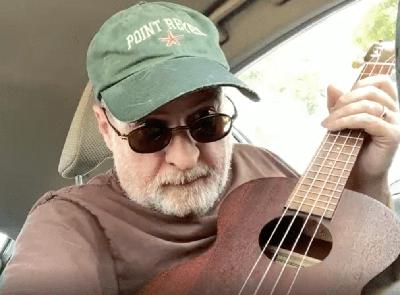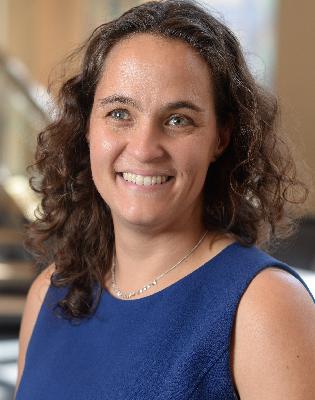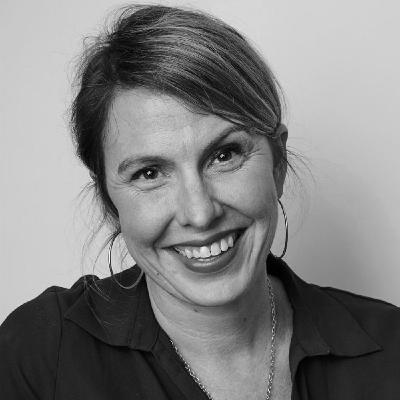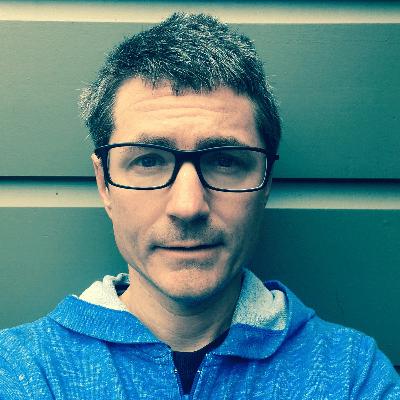48: Leading Design from IDEO to In-house (ft. Anne Pascual)
Description
Transcript
Jesse: I’m Jesse James Garrett,
Peter: and I’m Peter Merholz.
Jesse: And we’re finding our way,
Peter: Navigating the opportunities
Jesse: and challenges
Peter: of design and design leadership,
Jesse: On today’s show, Anne Pascual, VP and Head of Design for European fashion e-commerce giant Zalando, joins us to talk about driving innovation in a mature product category, the differences between leading design for an agency and leading design in-house, and creating a culture of trust at scale.
Peter: Thank you so much for joining us. Just to start off, it would be great to hear what you’re up to. I know you’ve been at Zalando for a while, but tell us a little bit about your journey and how you’ve arrived at where you are.
Anne: Yes, I’m happy to do so. Great to be here. So yeah, I’ve been with Zalando now over seven years. My current role is SVP Product Design, Marketing and Content. I actually started working with Zalando already nine years ago. At the time I was an executive design director at IDEO. And had the pleasure to consult Zalando, building up an innovation team, and then work basically side by side with Zalando for two years until I made the decision, okay, I want to now join and build a team from the ground up.
So I started off building up the product design team, which at the time, there were only two handful of UX designers, quite low design maturity in general, but a thriving startup with incredible growth rates. And so the first couple of years, I really focused just on product design and matured the team to a decent size and build different leadership layers, processes.
Then I expanded my role to also look after brand marketing and content creation, which is super exciting. As those are adjacent fields, but also very different fields and job families. So I’ve been learning a lot about that, but really the reason for this role is that obviously in order to build the brand and a coherent, compelling customer experience, those parts are super important when you work for the largest fashion e- commerce player in Europe. These journeys are quite intertwined. How you discover the brand, how you look at an ad, how you think more in general about fashion, and then come to the app to explore the assortment through content, through imagery, that then gets produced either in-house or sourced from brands, creators, or third party vendors.
So yeah, my job is definitely super interesting and I keep learning every day.
Designing for fashion experiences
Jesse: Fashion is a really interesting category for design because design has, I think, a special impact in that category on brand perception and perception of value and luxury and things like that. And I’m curious about how that’s come into play as you’ve been building up a design function for a giant fashion ecommerce retailer.
Anne: Yeah. I mean, luckily I’m also personally very passionate about fashion. I think it’s a super interesting way to express identity, to communicate, to innovate. So I’ve been always kind of interested in fashion as an individual. And when I got to work with Zalando, it became clear that fashion is this really important vehicle for people to express themselves connect with others.
And it’s also a super interesting industry. Where you see on one hand, large established fashion brands that in the beginning didn’t have any real connection to digital channels. And that’s where Zalando came in to really become the first big player in Europe to help those brands get their assortment online and make this access to fashion very easy and convenient.
This is also what Zalando became known for in the first couple of years. And design at the beginning obviously played a role in making that experience very seamless and trustworthy because, you know, people still had to get their head around how do I buy a pair of shoes or dress online? And, I’m comfortable returning it if it doesn’t fit.
So initially design is really about making the functional aspects of e-com work and doing a decent job in representing fashion through the right image representation, the right product detail information, but obviously also the whole transactional flow of adding something to the checkout and cart.
Now, what’s been super interesting is that from moving beyond just designing for these functional aspects I believe that also our team became more and more important to provide strategic guidance on where the overall experience should evolve to. And especially over the last couple of months and years, we’ve seen how fashion desires a much more emotional experience than maybe we have been providing until now.
So yes, the transactional part runs super smooth and very successfully. But if you look around, fashion is very much related to inspiration, and these days there’s a lot of it happening on social media. So now the design team, not only the design team, is focusing a lot around how do you get across these elements around storytelling and entertainment. How do you make the experience around fashion a lot more emotional? And less transactional and functional.
So yes, you’re absolutely right. This is exactly kind of the interesting design opportunity here to, on one hand, fulfill those functional needs around the shopping experience and the product as the garment and piece of clothing. And on the other hand, to be able to convey the stories behind the products, the stories behind the brands, and also really connect with our customers on an emotional level. And that’s not always easy, but super, super interesting.
Innovating in e-commerce
Jesse: I think that for a lot of people who work outside e-commerce, but we are all, of course, e-commerce users, e-commerce as a category feels very mature, right? We’ve had now 30 years of e-commerce best practices to draw on. And it’s interesting. because it sounds like what’s happened for you and your team is the realization of the need to go beyond those best practices to reintroduce design innovation into a category that doesn’t really feel like it has a lot of room for innovation, and I’m curious about how that’s come about and how you’ve gone about it as a design team.
Anne: Yeah. I mean, you’re absolutely right. We’ve done extensive work to actually map all the jobs to be done along this purchase journey. And they’re quite clear around, you know, finding an item, making a decision, understanding what you’re getting, how it may actually fit compared to other items and your style and then receiving it, potentially returning it or, keeping it.
So you’re right. There’s not like that many new problems to discover. At the same time, there’s still some fundamental problems to be solved. One, for instance, being size and fit. So it’s still one of the biggest challenges in comparison to the physical world, to know if something will fit me. And we have a dedicated team that’s been working for over many years now to identify different ways to provide size advice and recommendation. But also help customers build a size profile on Zalando and, through their usage, get better recommendations.
Now on the innovation side, what’s interesting is obviously that this industry is under fundamental changes, or going through fundamental changes, and there’s a few of them that now have really informed also our most recent strategy update.
One is this generational shift that many of our future, near-term customers have been growing up now with the Internet and smartphones and for them shopping in itself is of very different nature than maybe for our generation. We’ve been kind of happy to browse a category tree and I would say more of a warehouse-like UX, but this new generation has very different expectations and is used to different ways to discover what they like.
The second big shift, and potential for innovation, it’s obviously also technology– Gen AI now introduces totally new ways to interact with customers. Being at conversational UIs, but also how you generate content, and that obviously is super, super exciting to see.
Then there is obviously also the environmental shift that we are all very aware of, and that requires the whole industry to adapt. Thinking about how to provide the right information about a garment, how to give customers better choices to understand the environmental footprint. And this is something that obviously not a single player, even a large one like ourselves, can design in isolation, but it’s about working closely with authorities, other fashion brands, to really establish new standards and new ways to do justice to these big challenges for the industry as such.
So, there is a lot to innovate around and that one particular part that I’m focusing on in my current role is around inspiration and entertainment. So how do you create a completely new experience for customers to discover fashion and lifestyle, and to spend quality time on Zalando to learn more about fashion, fashion brands and products, but also to enjoy different ways to participate and play a more active role in this experience.
So right now, as I said, shopping is very one directional and very transactional, but if you think about it, it’s by nature, a lot























